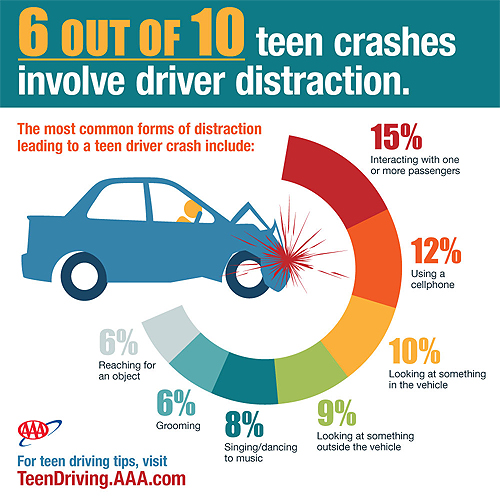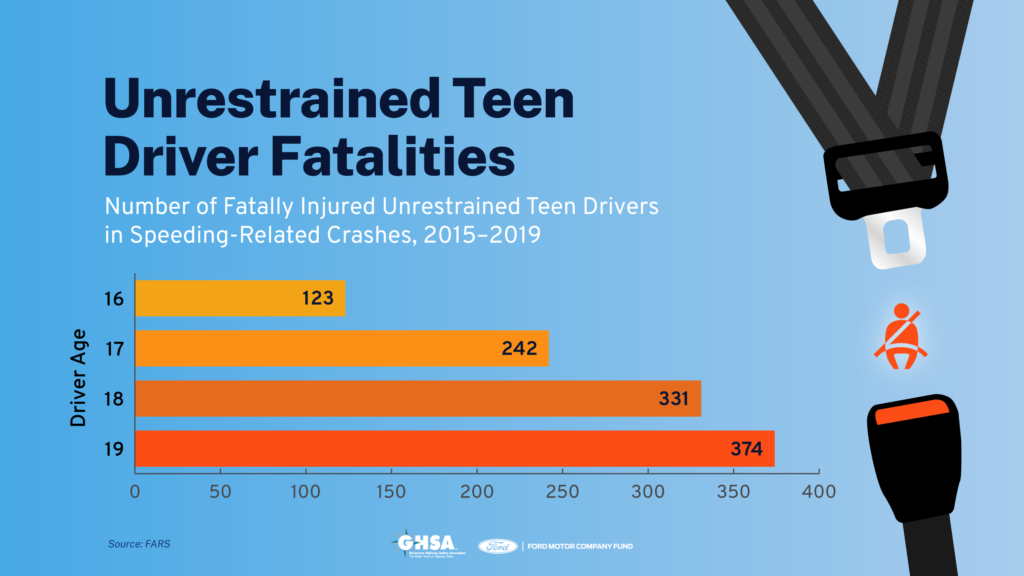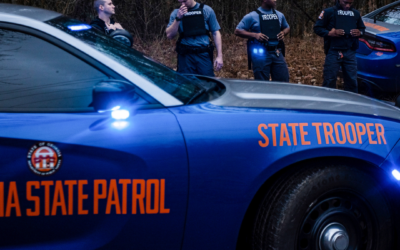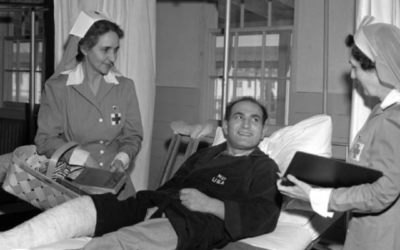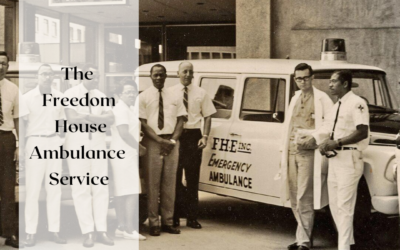Receiving your driver’s license can mean freedom at last! You don’t need your parents telling you how to drive or what to do while driving. It is time to hit the road and discover your independence!
It is important to keep in mind that even though you passed the driver’s test, anything can happen in a blink of an eye. Sadly, teenage driving accidents are at an all-time high.
The CDC tells us that teens aged 16-19 are at a higher risk of vehicle crashes than any other age group.
How much higher? How about quadruple!
The IIHS says “Teen drivers have crash rates nearly 4 times those of drivers 20 and older per mile driven. Immaturity leads to speeding and other risky habits, and inexperience means teen drivers often don’t recognize or know how to respond to hazards.”
Ouch.
Now here’s the wake-up call: Motor vehicle crashes are in the top three leading causes of death for teenagers in the United States. As a new driver, it is important to know the biggest risks.
5 Biggest Risks for New Drivers
1. Inexperience
Since most teenagers will have less than a year of experience, they may not be able to recognize hazardous situations. These situations can be stressful and new drivers may not know how to react. This inexperience in these kinds of situations can lead to motor vehicle crashes.
2. Speeding
Speeding is dangerous for drivers of all ages. Teenagers are at greater risk, though, since most teenagers do not see speeding as a serious problem. However, Forbes explains that “teenagers and their passengers account for a greater proportion of speeding-related deaths than any other motorist age group – 43% compared to 30%.”
3. Distracted Driving
In the State of New Jersey, it is illegal to text and drive. A recent report by CoPilot found that 28.6% of New Jersey teenagers used their phones while driving in 2021. Congrats, NJ teens, you’re third from last on this list, which is a good thing. But even 28.6 percent of teens using their phones while driving is too much since 6 out of 10 crashes, some resulting in death, are caused by distracted teen drivers. Oh yeah, another major distraction: passengers. The more passengers, the greater the distraction level.
4. Alcohol Use
Captain Obvious alert: In the State of New Jersey, it is prohibited to use alcohol until the age of 21. Yet one out of every 10 teenagers in high school drinks and drives. Teenagers have a low tolerance for alcohol. Also, they are inexperienced drivers which creates a bigger problem when under the influence. Again, according to the CDC, in 2019, “60% of drivers aged 15-20 who were killed in motor vehicle crashes after drinking and driving were not wearing a seat belt.” This leads us to number 5.
5. Not Wearing a Seat Belt
Teenagers are more likely than other age groups to not wear a seatbelt – as both passengers and drivers. Wearing a seatbelt is one of the most effective ways to save lives and injuries. This is why not wearing a seatbelt can cause many hazardous situations. CHOP reports that in 2019, 43% of high school students nationwide reported not always wearing a seat during the past month.
Earning a license is an exciting milestone in a young adult’s life. However, it is important to keep in mind that responsibility comes with consequences. And, as they say, “Safety comes first.”
Law enforcement personnel are well aware of the risks cited above and, not surprisingly, tend to pull over teen drivers more often than other age groups. Police stop more than 50,000 drivers on a typical day, according to a study by Stanford University. That means thousands of teens have an interaction with law enforcement every day and most are not prepared for this encounter.
Fortunately, OPTU now has a course available that can prepare new drivers for their first encounter with the police while behind the wheel. Getting pulled over by the police is a routine but stressful situation. OPTU wants both parties – the driver and the officer – to feel as relaxed as possible.
If you would like to start reducing risk and improving personal safety on the road, check the “Courses” link to learn more about our new motor vehicle course, “Interacting with Law Enforcement: Motor Vehicle Stops.”


